Chapter 3
Control Freak: Mastering Apple Watch’s Interface and Apps
IN THIS CHAPTER
![]() Recognizing the difference between a tap and a press
Recognizing the difference between a tap and a press
![]() Swiping the Apple Watch screen
Swiping the Apple Watch screen
![]() Exploring the Digital Crown button and the scroll feature
Exploring the Digital Crown button and the scroll feature
![]() Using the side button
Using the side button
![]() Going hands-free with Siri
Going hands-free with Siri
![]() Understanding tactile feedback: Apple Watch can tap you
Understanding tactile feedback: Apple Watch can tap you
![]() Previewing the built-in Apple Watch apps
Previewing the built-in Apple Watch apps
Are you ready for a deeper dive into Apple Watch’s controls, features, and options? That’s precisely what I cover in the following pages — or digital pages if you’re reading Apple Watch For Dummies in ebook form.
Though it’s unlikely you’d want to read an electronic book on Apple Watch’s diminutive screen, your always-on mobile companion can do so much to help you throughout the day. This chapter explores what’s possible, beginning with mastering the controls.
As with many other Apple products, the user experience is paramount, and the Cupertino, California–based company has nailed the interface once again with Apple Watch.
In other words, Apple Watch is easy to use.
After you look at using Apple Watch’s screen and buttons (and microphone and speaker), I suggest a few different ways to take advantage of the watch’s main features — including Dock, Control Center, and Notifications — and then I wrap up with an overview of the built-in Apple apps.
Handling Apple Watch’s Controls
This watch is on your wrist, so the main way you interface with it is with your fingertips. But you have a few different ways to do it.
Just like with your iPhone, iPod touch, and iPad, you can use your fingers on the Apple Watch screen to tap, double-tap, press, two-finger press, and swipe. The Digital Crown button and the side button also help you access myriad features on your Apple Watch.
Tap
Tapping on something, such as an icon, is akin to pressing Enter on a computer, or clicking the left button on a computer mouse. Tapping confirms a command, as in “Yes, I want that” — whether it’s playing a song, accepting a calendar invitation, starting turn-based directions on a map, or hanging up on a completed call. As shown in Figure 3-1, tapping is the frequent method for interacting with Apple Watch.
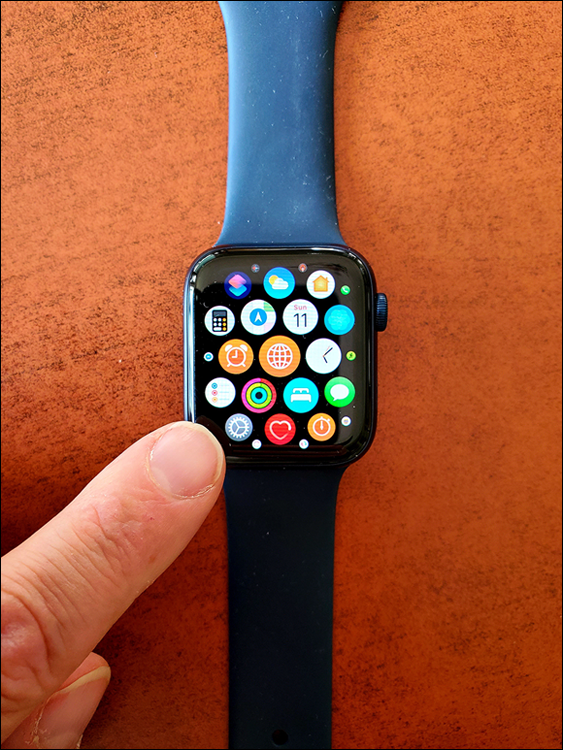
FIGURE 3-1: Tap the screen with your fingertip to access apps and other content.
Speaking of taps, you can also send a tap to friends and loved ones to let them know you’re thinking about them. Apple calls this its Digital Touch feature — a communications option that lets you send an image and subtle vibration to someone else’s Apple Watch (required). See Chapter 5 for more on sending taps to friends and loved ones.
Double-tap
You might not use double-tap very much, but Apple Watch does recognize this action. First, you must enable Accessibility settings by triple-tapping the Digital Crown button (see Chapter 2 for more on these settings). Once you do so, you can activate Voice Over, which is having text spoken to you in a humanlike voice, simply by double-tapping the screen. Another Accessibility option is Zoom: Quickly tap twice on the screen with two fingers for a closer look at text or images.
Press (Force Touch)
Apple Watch understands the difference between a light touch and a deep press and reacts accordingly. That is, you can quickly tap, as explained in the “Tap” section, or press with your finger and hold for a second to trigger access to a range of contextually specific controls tied to the task at hand. Apple calls this Force Touch. When you use Force Touch, pressing firmly on the screen displays additional controls in such apps as Messages, Music, and Calendar. It also lets you select different watch faces, pause or end a workout, search an address in Maps, and more. Force Touch is the most significant new sensing capability since Multi-Touch on smartphones!
Two-finger press (time or heartbeat)
If you lightly press two fingers on the Apple Watch clock face screen, you hear a voice announce the time for you!
Also, you can let someone special know you’re thinking about him or her by sending that person your heartbeat, as shown in Figure 3-2. The catch? He or she also needs an Apple Watch.
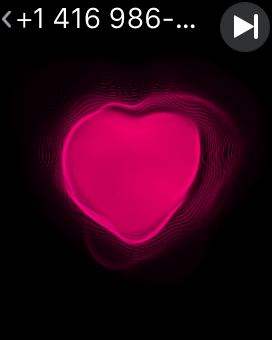
FIGURE 3-2: Send your heartbeat by pressing two fingers on the screen at the same time.
In the Messaging app (Chapter 5), tap the Heart icon and then press two fingers on the screen at the same time and the built-in heart rate sensor records and sends your heartbeat to a loved one, who will feel it on his or her wrist. Apple calls it “a simple and intimate way to tell someone how you feel,” and it’s a feature not found on any other smartwatch.
Again, please flip to Chapter 5 for more on sending your heartbeat to someone!
Swipe
Like most other mobile screens in your life — such as a smartphone, tablet, and many laptops — Apple Watch also supports onscreen swiping. If the app supports it, you can swipe around using your fingertip.
Sketch
Just as you can tap, press, and swipe on the Apple Watch screen, you can also use your finger to quickly draw something on the small display and then send it to someone else who wears an Apple Watch. Apple calls this a sketch. It could be a flower, heart, puppy, butterfly, wedding ring, Christmas tree, or whatever. See Figure 3-3 for an example of a sketch.
Not only will the person you send your sketch to see what you draw on his or her Apple Watch, but that person can also watch your sketch come to life with animation — and then respond back with a sketch of his or her own. See Chapter 5 for more on sketches.
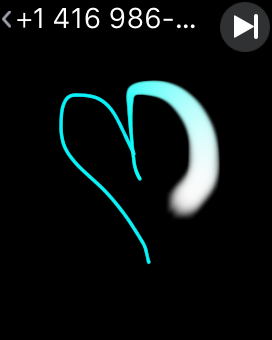
FIGURE 3-3: Sketch whatever you like — in your desired color — and then send it to another person’s Apple Watch.
Digital Crown button
Apple is known for introducing new ways to interact with content, and the Digital Crown button is no exception. If the watch is worn on the left wrist, this button is on the top right side of the Apple Watch case. It looks like the crown on mechanical watches, which was traditionally used to wind the main spring and to set the time. For the watchOS platform, it’s used primarily to magnify content on the small screen without your fingers getting in the way of content. Instead of pinching to zoom, as you would on an iPhone or iPad, you twist the Digital Crown forward or backward to zoom in and out of photos or maps. You can also use it to quickly scroll through contacts, songs, and more.
Keep in mind that you can flip the band around to wear the watch on your right wrist, which places the Digital Crown on the left-hand side of Apple Watch. Of course, you can keep the side button and the Digital Crown button on the right side of the watch while wearing the watch on your right wrist, but it may not be comfortable for you to access these buttons with your left hand. But be sure to go to the Settings area to change which wrist you’re wearing your watch on. See Chapter 11 for more on changing the watch’s orientation.
At any time, you can also press the Digital Crown button to see the watch face or (if on the watch face already) return to the Home screen, which is similar to pressing the Home button on an iPhone or iPad (or if you don’t have a Home button on newer iPhones and iPads, pressing the Digital Crown is like swiping up from the bottom of the device to get to your Home screen). Or press and hold the button to activate Siri. Double-pressing the Digital Crown button switches between the watch face (the one you’ve chosen to display) and the last app you used. It’s a fast and convenient way to see the time, regardless of the app you’re in. Twist the Digital Crown to zoom, scroll, or adjust what’s on the screen.
To summarize, use this list to determine how to use the Digital Crown button for a specific task:
- To return to the Home screen: Press the Digital Crown button once to return to the watch’s Home screen (similar to pressing the Home button or swiping up from the bottom on the screen on an iPhone or iPad).
- To return to the clock/to return to the most recent app: Double-press the Digital Crown button to see the clock again. Double-press the Digital Crown button again to go back to the last app you were in. This is a fast and convenient way to see the time regardless of what app you’re in.
- To activate Siri: Press and hold the Digital Crown button to launch your voice-activated personal assistant. Or you can just say “Hey, Siri” into your watch, followed by a question or command.
- To zoom/scroll: On the Home screen and in supported apps, twist the Digital Crown button forward or backward — as if you were winding your watch — to scroll through lists or zoom in on a photo, a map, the Home screen, and more.
- To unlock the screen: If you’re a swimmer, you can turn it to unlock the screen after a swimming workout (for Apple Watch Series 2 or later).
Side/Power button
Apple Watch has another handy button that’s located just below the Digital Crown button on the right side (if you’re wearing Apple Watch on your left wrist). Depending on whom you ask, it’s called the side button or the Power button.
Some refer to this side button as a Power button because holding it down for a couple seconds displays a power-down screen where you can choose to turn your watch off. This is similar to pressing and holding the Power button on the top or side of an iPhone or iPad.
Double-pressing the side button initiates Apple Pay, thus allowing you to use your Apple Watch to make a purchase at a participating retailer or compatible vending machine. Once you pair your Apple Pay account with a credit or debit card, you simply wave your NFC-enabled (near field communication) smartwatch over a contactless sensor to initiate the transaction. You should hear a faint tone and feel a slight pulse vibration to confirm this digital handshake has been completed. Apple Pay works on Apple Watch as long the watch stays in contact with your skin. See Chapter 10 for more on Apple Pay.
Double-tapping the side button also lets you select a card synced with the Wallet app on iPhone. This may include boarding passes, event tickets, coupons, student ID cards, and much more. See Chapter 10.
Finally, pressing and holding the button initiates the SOS emergency feature, which allows you to quickly and easily call for help and alert your emergency contacts that you’re in danger.
The following is a summary of the side button’s features:
- Power: Press and hold the side button until you’re prompted to turn off the power. You probably won’t use this very much — just like you don’t power down your iPhone or iPad often. But you can if you want.
- Pay: Double-tap the side button to launch Apple Pay for when you’re about to buy something. Remember, Apple Pay requires skin contact to operate, so ensure the watch is snug on your wrist before you press the side button twice to launch Apple Pay. You can also access cards synced with the Wallet app on iPhone (such as boarding passes).
- SOS: Press and hold the side button to display to activate SOS, if you need to have your watch call an emergency contact or emergency services. If you don’t have a cellular Apple Watch option, you require a nearby iPhone for these emergency numbers to be dialed. Chapter 8 has more on the SOS feature.
Going Hands-Free with Siri
Can you think of an even more natural way to interface with a smartwatch than touching it?
How about talking into it?
Apple’s Siri (pronounced “sear-eee”) is a voice-activated personal assistant that lets you ask questions or give a command on an iPhone, iPad, or iPod touch — and now Apple Watch. But unlike the other iOS devices, you simply press and hold the Digital Crown to ask a question on Apple Watch (and there are other ways to activate Siri, too, hands-free, as you see shortly).
In Chapter 7, I cover all the different ways Siri can help you master Apple Watch, but for now, I offer a quick snapshot on how to use it.
To activate Siri on your Apple Watch, follow these steps:
-
Press and hold the Digital Crown button.
You see something like “What can I help you with?” on your Apple Watch screen. Siri is ready for your instructions after the short chime.
-
Ask Siri a question or give a command.
You could, for example, ask “Who’s winning the New York Yankees game?” In fact, you don’t have to say the full team’s name; therefore, asking how the “Yankees” are doing rather than the “New York Yankees” is usually fine. Siri then shows you the requested information or tells you what you asked for.
As the information is being displayed — in real time, no less — Siri also says something like “Okay, sports fans, let’s have a look,” or “Here you go.”
-
Press the Digital Crown button again if you want to go back to the Home screen.
You should then see the Apple Watch’s main screen — flush with icons.
Vibrating Along with Apple Watch’s Tactile Feedback
Apple Watch can be tapped, pressed, swiped, and spoken to. But your smartwatch can also tap you in the form of a light vibration. Powering this technology is what Apple calls a Taptic Engine.
Apple’s Taptic Engine is a linear actuator inside Apple Watch that produces haptic feedback; in plain English, it’s a slight buzz on your wrist whenever you receive an alert or notification or press down on the display (like some smartphones offer). Another comparison might be a video game controller that buzzes in your hands in conjunction with what’s happening on your TV screen (like your character being shot in a first-person shooter).
Not only does Apple Watch’s Taptic Engine give you information without your having to even look down at your wrist — such as Apple Watch telling you (based on the number of taps you felt) to turn left or right while using Apple Maps — but it also enables new and intimate ways to interact with those who also own an Apple Watch. Chapter 5 further discusses how to send a tap or your unique heartbeat to a friend or loved one.
Using Control Center, Dock, and Notifications
Apple Watch gives you a couple ways to glean information while on the go: Control Center, Dock, and notifications.
Remember, Apple Watch isn’t meant for reading lengthy websites — actually, the watch doesn’t have a web browser — because it’s designed for quick interactions. Though they differ, Control Center, Dock, and notifications give you bits of customized information when and where you need them.
Control Center
On an earlier version of watchOS, swiping up from the bottom of the screen would launch Glances, which were quick snippets of information, such as how your favorite sports team was doing, weather information, or how your stock was performing. Now, this motion initiates the Control Center — a quick look at information on your watch, for example, such as battery percentage, the Wi-Fi and cellular signal, flashlight mode (turning the screen bright to see in the dark), Airplane mode, and more than a half-dozen other options (see Figure 3-4).
To activate Control Center on your Apple Watch, follow these steps:
-
Swipe up from the bottom of the clock (time) screen.
You’ll see common icons at a glance. Common icons include:
- Remaining battery percentage
- If your Apple Watch is using Wi-Fi or cellular
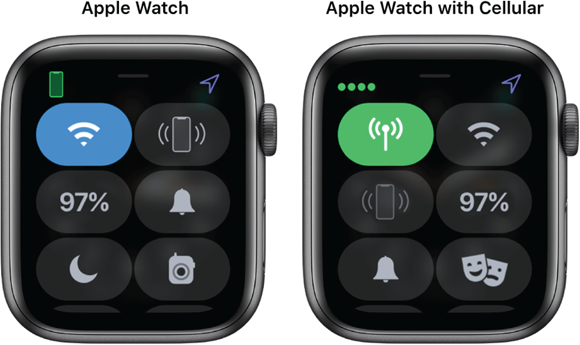
FIGURE 3-4: Access the Control Center on Apple Watch by swiping up from the bottom of the screen. Keep swiping to see different icons that can be used to quickly make changes.
- Whether your flashlight app is on (helps you see in the dark, with three options)
- If Water Lock is enabled, which then pushes water out of the speaker after swimming
- Pinging iPhone (to make your nearby phone ping/ring loudly so you can find it)
- Whether Airplane mode is on
- Whether your Theatre mode is activated (this mode keeps the watch silent and the screen dark until you tap it)
- Choose where to play audio (Apple Watch or a wirelessly connected device, such as AirPods)
-
Select one of the Control Center options.
Tap one of the dozen or so options and tap again to turn it off. Can’t find your iPhone? Tap the icon that looks like a phone with sound coming out of it and your Apple Watch audibly “pings” your missing iPhone to help you locate it nearby (with Bluetooth it’s generally 30 to 50 feet).
-
Tap Edit to customize your Control Center.
You can change what you see on your Dock by scrolling to the bottom of the Control Center and selecting Edit. Now, the icons wiggle, which means you can move them “drag and drop” style into a desired order on the Apple Watch screen.
Dock
Over the last couple of years, Apple added a handy Dock feature for Apple Watch wearers. You activate this by pressing the side button. Quite simply, Dock lets you quickly open your favorite apps or move from one app to another.
Here’s how to get going:
-
Choose which apps you want to appear in Dock.
You can select up to ten of your favorites, in fact. To choose what you want, simply:
- Open the Apple Watch app on iPhone.
- Tap My Watch and then choose Dock.
-
Tap Edit and then add or remove apps to choose your favorites.
To rearrange apps, touch and hold next to an app, and then drag up or down.
- Save your changes by tapping Done.
- Press the side button on your Apple Watch to activate Dock.
-
Swipe up or down.
Alternatively, you can turn the Digital Crown. It cycles through the last apps you opened or your favorite apps, as shown in Figure 3-5.
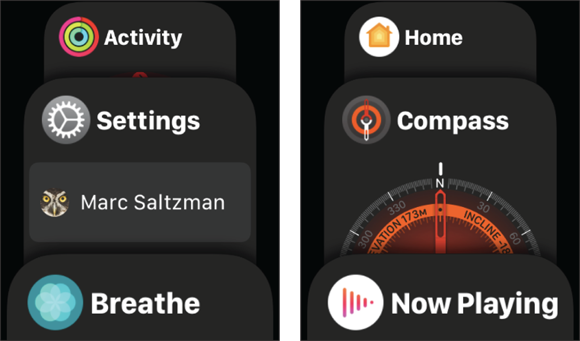
FIGURE 3-5: Press Apple Watch’s side button to either launch Dock, display your recently opened apps, or, if you prefer, set it to display up to ten of your favorite apps.
-
Tap to open an app.
If you scroll all the way down to the bottom of the screen, you can tap All Apps to go to the Home screen.
- Close Dock by pressing the side button again.
Notifications
Much like notifications on an iPhone or iPad, Apple Watch notifications display app information at a specific time. This could be a voicemail waiting for you, a calendar appointment, a news headline from CNN, a social media notification (someone started following you or liked your photo), a comment made to your online classifieds ad, or a game letting you know it wants you to come back.
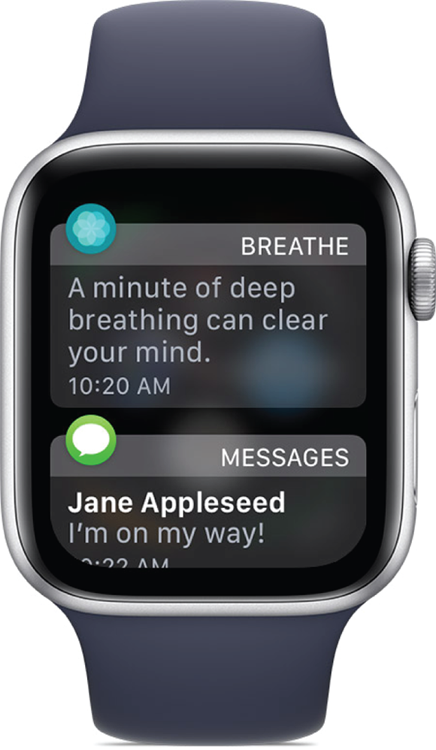
FIGURE 3-6: Notifications on your Apple Watch can show you a bit of time- or location-relevant information.
Apple Watch has two kinds of notifications:
- Short-look notifications: These appear when a local or remote alert first arrives (see Figure 3-6). They present a minimal amount of information to you. If your wrist is lowered, the short-look note disappears. Information includes the app name, icon, and title.
- Long-look notifications: These appear when your wrist remains raised or if you tap the short-look interface. You receive more detailed information and more functionality, such as four action buttons for additional information. You need to dismiss these notifications when you’re done by swiping up.
Apple asks its app developers to make sure notifications are relevant to what the user wants and to not bombard them with messages all day long. Nonetheless, you can turn off notifications for any app in the Apple Watch app on iPhone; see Chapter 6 for more on how to do this.
Looking at Apple Watch’s Built-In Apps
Similar to the preinstalled apps designed to help get you started on other Apple products, Apple Watch has a number of built-in apps too. These include:
- To keep you in touch: Phone, Messages, and Email
- To prevent you from getting lost and to find stuff around you: Maps
- To stay organized and informed: Calendar, Clock, Weather, and Stocks
- To entertain you: Music and Photos
I briefly list some of these apps in Table 1-1 in Chapter 1, but here, I discuss all of them in greater depth because you’re likely to rely on many of these apps. Okay, so some might not appeal to everyone, such as a Stopwatch or a World Clock, but they’re available if, and when, you want them.
Phone
 You no longer need to reach for your iPhone to see who’s calling you. Simply glance at your wrist to see the name or number (if he or she isn’t in your Contacts) and decide whether to take the call. You can have a chat through the watch if you like, or transfer the call over to your iPhone. Don’t want to take the call? Simply cover Apple Watch with your hand to mute it. You can also place a call to someone through Apple Watch — even if your iPhone isn’t nearby — providing you have a cellular plan for your supported Apple Watch (or you make calls over Wi-Fi). See Chapter 5 for more on talking on your Apple Watch.
You no longer need to reach for your iPhone to see who’s calling you. Simply glance at your wrist to see the name or number (if he or she isn’t in your Contacts) and decide whether to take the call. You can have a chat through the watch if you like, or transfer the call over to your iPhone. Don’t want to take the call? Simply cover Apple Watch with your hand to mute it. You can also place a call to someone through Apple Watch — even if your iPhone isn’t nearby — providing you have a cellular plan for your supported Apple Watch (or you make calls over Wi-Fi). See Chapter 5 for more on talking on your Apple Watch.
Messages
 If someone sends you a text message (SMS) or an iMessage to your iPhone, Apple Watch gives you a subtle tap to let you know about it. Raise your wrist to see who wrote it and to read the message. You can reply with a preset response, send an animated emoji, dictate the response, or record and send a short audio message. See Chapter 5 for more on handling messages on your Apple Watch. Figure 3-7 shows an example of a text message.
If someone sends you a text message (SMS) or an iMessage to your iPhone, Apple Watch gives you a subtle tap to let you know about it. Raise your wrist to see who wrote it and to read the message. You can reply with a preset response, send an animated emoji, dictate the response, or record and send a short audio message. See Chapter 5 for more on handling messages on your Apple Watch. Figure 3-7 shows an example of a text message.
 Although a small smartwatch screen may be more conducive for short text messages than lengthy emails, you can read your personal or professional email on your watch, as shown in Figure 3-8. You can also flag emails, mark them as read or unread, reply to them, or delete them (press and hold on the screen to access a few options). But you can’t create an email from scratch (you need your iPhone for that). See Chapter 5 for more on reading and responding to emails on your Apple Watch.
Although a small smartwatch screen may be more conducive for short text messages than lengthy emails, you can read your personal or professional email on your watch, as shown in Figure 3-8. You can also flag emails, mark them as read or unread, reply to them, or delete them (press and hold on the screen to access a few options). But you can’t create an email from scratch (you need your iPhone for that). See Chapter 5 for more on reading and responding to emails on your Apple Watch.
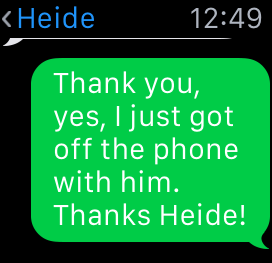
FIGURE 3-7: Because the Apple Watch has no keyboard, you have to use your voice to dictate a reply.

FIGURE 3-8: Read your email on Apple Watch.
Memoji
 Make your own Memoji — fusing the word “me” and “emoji — which is an animated cartoon representation of yourself you can use in messages, as shown in Figure 3-9.
Make your own Memoji — fusing the word “me” and “emoji — which is an animated cartoon representation of yourself you can use in messages, as shown in Figure 3-9.
Note: You can create Memoji on the Apple Watch, using the Memoji app, or you can create them through the Messages app on iPhone or iPad and sync your devices.
Tap Get Started on Apple Watch and start selecting Skin, Hairstyle, Brows, Eyes, Head, Nose, Mouse, Ears, Facial Hair, Eyewear and Headwear. It’s fun!
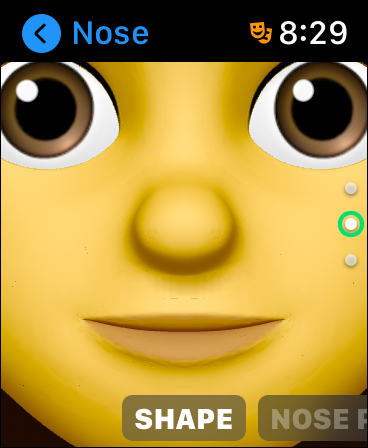
FIGURE 3-9: Create your personalized Memoji.
Calendar
 Your wrist can tell you when you’ve got an upcoming calendar appointment. You can set meeting reminders, accept or decline calendar invitations, and, if desired, email the organizer with a preset response. See Chapter 6 for more on Calendar options.
Your wrist can tell you when you’ve got an upcoming calendar appointment. You can set meeting reminders, accept or decline calendar invitations, and, if desired, email the organizer with a preset response. See Chapter 6 for more on Calendar options.
Alarm
 Apple Watch lets you set and manage multiple alarms, such as those for meetings or wakeup calls. You can either ask Siri to set them or set them yourself using the Digital Crown button to tweak the alarm time. You can even choose for the alarm to vibrate your wrist. Figure 3-10 shows the Apple Watch’s Alarm app. Don’t forget you can also sync your iPhone alarms to your Apple Watch. See Chapter 4 for more on setting alarms.
Apple Watch lets you set and manage multiple alarms, such as those for meetings or wakeup calls. You can either ask Siri to set them or set them yourself using the Digital Crown button to tweak the alarm time. You can even choose for the alarm to vibrate your wrist. Figure 3-10 shows the Apple Watch’s Alarm app. Don’t forget you can also sync your iPhone alarms to your Apple Watch. See Chapter 4 for more on setting alarms.
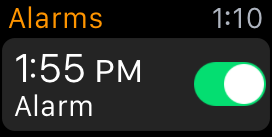
FIGURE 3-10: Use the Alarm app to have your watch wake you up.
Stopwatch
 Much like the stopwatch on your iPhone, Apple Watch offers one for your convenience, and you can set it to digital, analog, or hybrid view. Apple Watch also offers an optional graph view. See Chapter 4 for more on using the Stopwatch app on your Apple Watch.
Much like the stopwatch on your iPhone, Apple Watch offers one for your convenience, and you can set it to digital, analog, or hybrid view. Apple Watch also offers an optional graph view. See Chapter 4 for more on using the Stopwatch app on your Apple Watch.
Timer
Whether you’re running around a track or cooking something in the oven, Apple Watch has a timer for that. As the timer runs, you should see a line move around the dial to give you a sense of how much time has passed and is left. See Chapter 4 for more on setting timers on your Apple Watch.
World Clock
You don’t need to go to a website to see the time in different cities around the world (or count on your fingers as you do the manual calculation between, say, New York and London). Launch the World Clock app to see the time in cities of your choosing. You can use your iPhone to add new locations at any time. See Chapter 4 for more on setting up the World Clock app.
Siri
Siri is a fast and convenient way to interface with your Apple Watch. In fact, nothing is more natural than using your voice; your smartwatch responds after you say “Hey, Siri,” followed by a question or command. Alternatively, you can push and hold the Digital Crown button to activate Siri. See Chapter 7 for more on using Siri to help you do things on your Apple Watch.
Weather
 Use Apple Watch to check the weather where you are or for any city in the world. This app shows the temperature and precipitation at that exact moment or for the days or week ahead. See Figure 3-11 for a glimpse at the Weather app. If you have not chosen a watch face that includes weather information, the quickest way to access that information is to ask Siri for it. The second-quickest way is to swipe up and access the Weather Glance screen. Of course, opening the app itself is the third-quickest way, but you should choose a method that works best for you. See Chapter 6 for more on the Weather app on your Apple Watch.
Use Apple Watch to check the weather where you are or for any city in the world. This app shows the temperature and precipitation at that exact moment or for the days or week ahead. See Figure 3-11 for a glimpse at the Weather app. If you have not chosen a watch face that includes weather information, the quickest way to access that information is to ask Siri for it. The second-quickest way is to swipe up and access the Weather Glance screen. Of course, opening the app itself is the third-quickest way, but you should choose a method that works best for you. See Chapter 6 for more on the Weather app on your Apple Watch.
Stocks
Follow all the companies you have a vested interest in — or plan on buying into — with the Stocks app on your Apple Watch. This app lets you keep up with the stock market price, point and percentage, market cap, and more. All your stocks include a historical graph. See Chapter 6 for more on the Stocks app on your Apple Watch.
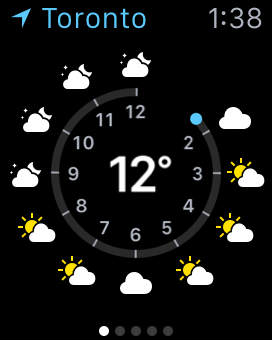
FIGURE 3-11: We love knowing the weather, and Apple Watch provides multiple ways to see it, including via the Weather app.
Activity
 Activity is one of the two important fitness-related Apple Watch apps. The three Activity rings — Move, Exercise, and Stand — give you a simple yet informative glimpse into your daily activity goals and progress. The app was designed to motivate you to sit less and move more. See Figure 3-12 for the three Activity rings, and see Chapter 8 for more on the Activity app on your Apple Watch.
Activity is one of the two important fitness-related Apple Watch apps. The three Activity rings — Move, Exercise, and Stand — give you a simple yet informative glimpse into your daily activity goals and progress. The app was designed to motivate you to sit less and move more. See Figure 3-12 for the three Activity rings, and see Chapter 8 for more on the Activity app on your Apple Watch.
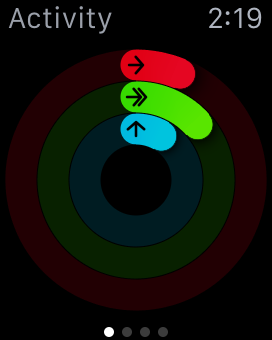
FIGURE 3-12: This smart, color-coded Activity app shows your daily progress.
Workout
 During an exercise routine, the Workout app shows you real-time fitness information, including time, distance, calories, pace, and speed. You can choose from preset workouts, such as Running, Walking, Cycling, and others. Figure 3-13 shows you the Workout app. Chapter 8 gives more information on how to use it on your Apple Watch.
During an exercise routine, the Workout app shows you real-time fitness information, including time, distance, calories, pace, and speed. You can choose from preset workouts, such as Running, Walking, Cycling, and others. Figure 3-13 shows you the Workout app. Chapter 8 gives more information on how to use it on your Apple Watch.
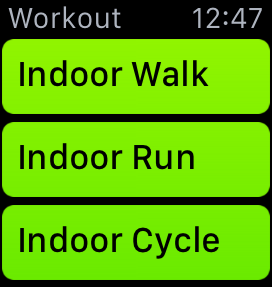
FIGURE 3-13: The Workout app offers some exercise routines.
Maps
 Whether you’re trying to find a restaurant in your hometown or you feel like going on a stroll in an exotic city, your Apple Watch can give you directions based on your current location, as shown in Figure 3-14. See the fastest route, get turn-by-turn navigation instructions (including taps on your wrist when it’s time to turn), or ask Siri to find local businesses. See Chapter 6 for more on the Maps app on your Apple Watch.
Whether you’re trying to find a restaurant in your hometown or you feel like going on a stroll in an exotic city, your Apple Watch can give you directions based on your current location, as shown in Figure 3-14. See the fastest route, get turn-by-turn navigation instructions (including taps on your wrist when it’s time to turn), or ask Siri to find local businesses. See Chapter 6 for more on the Maps app on your Apple Watch.
Photos
 Those who matter to you are now just a glance away. The Photos app on Apple Watch displays your photos of loved ones, friends, pets, scenery, and other memories. Use the Digital Crown button to zoom in on individual images or swipe to browse through them one photo at a time. You can even choose photos to load on your watch — even if your iPhone isn’t near. See Chapter 12 for more on using the Photos app on your Apple Watch.
Those who matter to you are now just a glance away. The Photos app on Apple Watch displays your photos of loved ones, friends, pets, scenery, and other memories. Use the Digital Crown button to zoom in on individual images or swipe to browse through them one photo at a time. You can even choose photos to load on your watch — even if your iPhone isn’t near. See Chapter 12 for more on using the Photos app on your Apple Watch.

FIGURE 3-14: Get directions to a location, such as a local business, by using the Maps app.
Camera
 Although Apple Watch doesn’t have a camera, you can use it as a live viewfinder for your iPhone’s rear-facing camera. You can, therefore, use your watch to see and snap a subject, essentially turning your wrist into a wireless shutter (ideal for selfies). Plus you can adjust the timer remotely. See Chapter 12 for more on using your Apple Watch to control your iPhone’s camera.
Although Apple Watch doesn’t have a camera, you can use it as a live viewfinder for your iPhone’s rear-facing camera. You can, therefore, use your watch to see and snap a subject, essentially turning your wrist into a wireless shutter (ideal for selfies). Plus you can adjust the timer remotely. See Chapter 12 for more on using your Apple Watch to control your iPhone’s camera.
Music
You can keep your iPhone tucked away in your pocket or purse and play your music remotely on your Apple Watch. Figure 3-15 shows what your songs look like on your watch, complete with album artwork if you have it on your iPhone. You might want to load up your watch with a few hundred tunes to listen to when you don’t have your phone with you (Bluetooth headphones are required). See Chapter 9 for more on listening to music or managing your music on your Apple Watch.

FIGURE 3-15: Like music? You’ll love Apple Watch because it can store music you synced from your iPhone. You can also control tunes on your iPhone or stream directly from Apple Music.
Remote
 Not only can you remotely control your iPhone music via your Apple Watch, you can also use it to access a nearby Apple TV box connected to your TV. Your wrist-based remote can navigate the main menu, scroll through media lists, and select what you want. Your watch’s Remote app can also be used to control your iTunes library and iTunes Radio on a PC or Mac. See Chapter 9 for more on using your Apple Watch as a remote control.
Not only can you remotely control your iPhone music via your Apple Watch, you can also use it to access a nearby Apple TV box connected to your TV. Your wrist-based remote can navigate the main menu, scroll through media lists, and select what you want. Your watch’s Remote app can also be used to control your iTunes library and iTunes Radio on a PC or Mac. See Chapter 9 for more on using your Apple Watch as a remote control.
Wallet and Apple Pay
 Formerly referred to as Passbook, this handy app for iPhone also works well on Apple Watch, and lets you keep track of such things as boarding passes, movie or theater tickets, loyalty cards, and more. Time-based alerts let you know when you should or can use these plane or train tickets, loyalty cards, and such. When you shop with Apple Pay, you choose on which credit or debit cards to make the purchase. See Chapter 10 for more on using Apple Pay with your Apple Watch, as well as for more about Wallet.
Formerly referred to as Passbook, this handy app for iPhone also works well on Apple Watch, and lets you keep track of such things as boarding passes, movie or theater tickets, loyalty cards, and more. Time-based alerts let you know when you should or can use these plane or train tickets, loyalty cards, and such. When you shop with Apple Pay, you choose on which credit or debit cards to make the purchase. See Chapter 10 for more on using Apple Pay with your Apple Watch, as well as for more about Wallet.
Apple News
 As you might expect, this convenient app curates some of the top news headlines for you to read on your watch. You might find yourself in line at a supermarket or waiting for a friend on a park bench; tapping this red icon lets you view some of the top headlines as you wait. If there’s something that interests you but you don’t have time to read it now, tap Save for Later, and the entire article will appear on the Apple News app on iPhone. Want to move on? Tap Next Story. News sources include Washington Post, Fox, CNN, Newsweek, Billboard, VentureBeat, and many others.
As you might expect, this convenient app curates some of the top news headlines for you to read on your watch. You might find yourself in line at a supermarket or waiting for a friend on a park bench; tapping this red icon lets you view some of the top headlines as you wait. If there’s something that interests you but you don’t have time to read it now, tap Save for Later, and the entire article will appear on the Apple News app on iPhone. Want to move on? Tap Next Story. News sources include Washington Post, Fox, CNN, Newsweek, Billboard, VentureBeat, and many others.
Breathe
 Live a better day by taking a minute to Breathe. Figure 3-16 is what you’ll see when you tap the teal-colored Breathe app on Apple Watch. “Quiet your mind, relax your body and be in the moment,” it continues, before asking you to try and complete at least one session per day. You’ll also be nudged to Breathe on your Apple Watch, when it thinks you should take a break, and you can twist the Digital Crown to change the duration of the breathing exercises the app guides you through.
Live a better day by taking a minute to Breathe. Figure 3-16 is what you’ll see when you tap the teal-colored Breathe app on Apple Watch. “Quiet your mind, relax your body and be in the moment,” it continues, before asking you to try and complete at least one session per day. You’ll also be nudged to Breathe on your Apple Watch, when it thinks you should take a break, and you can twist the Digital Crown to change the duration of the breathing exercises the app guides you through.
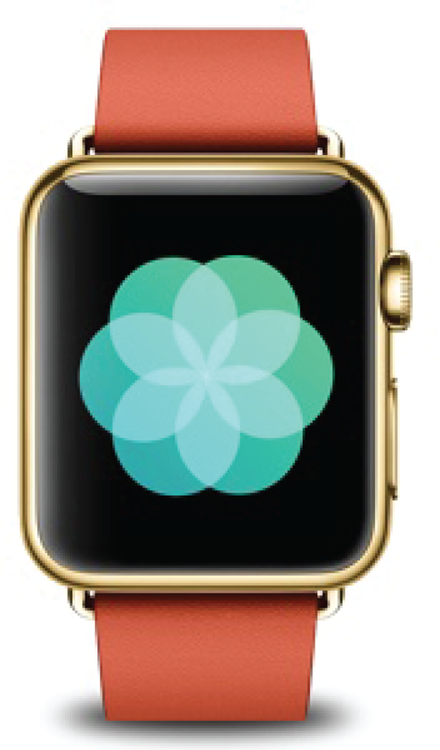
FIGURE 3-16: Take a moment out of your hectic life and focus on your breathing with the Breathe app.
Sleep
Use this app to schedule your wake-up alarm, bedtime, and bedtime reminders on Apple Watch or iPhone. You can also set up a sleep goal, such as trying to get the recommended 8 hours per night (I wish!) and your Apple Watch tells you whether you’ve hit your goal.
Walkie-Talkie
 Communicate Apple Watch to Apple Watch. This app lets you have a voice conversation with someone else via your watches. Any model of Apple Watch works — even Series 1 — but you need Apple watchOS 5 or newer to use it. Contacts you add, such as your partner, kids, or boss, can talk to you whenever you’re set to “Available.” You’ll see some Suggested contacts (for example, family members) and then a list of all the people listed on your iPhone’s Contacts app. Tap to invite them and they’ll have a chance to accept. Swipe down to show whether you’re available to chat. There’s a deeper dive of Walkie-Talkie in Chapter 5.
Communicate Apple Watch to Apple Watch. This app lets you have a voice conversation with someone else via your watches. Any model of Apple Watch works — even Series 1 — but you need Apple watchOS 5 or newer to use it. Contacts you add, such as your partner, kids, or boss, can talk to you whenever you’re set to “Available.” You’ll see some Suggested contacts (for example, family members) and then a list of all the people listed on your iPhone’s Contacts app. Tap to invite them and they’ll have a chance to accept. Swipe down to show whether you’re available to chat. There’s a deeper dive of Walkie-Talkie in Chapter 5.
Heart Rate
 As you might expect, tapping this little red heart shows your current heart rate and daily summaries on Apple Watch. This Health app can notify you if Apple Watch detects your heart rate is high or low. You can adjust or turn off these notifications in the Apple Watch app on your iPhone. Tap Turn On to activate it, and you’ll see it measuring your beats per minute (BPM) and logging the time your rate was measured as well as some historical info.
As you might expect, tapping this little red heart shows your current heart rate and daily summaries on Apple Watch. This Health app can notify you if Apple Watch detects your heart rate is high or low. You can adjust or turn off these notifications in the Apple Watch app on your iPhone. Tap Turn On to activate it, and you’ll see it measuring your beats per minute (BPM) and logging the time your rate was measured as well as some historical info.
Blood O2
 As you see in Chapter 8, this app starts a 15-second blood-oxygen measurement (see Figure 3-17). Small beams of light on the back of the watch shine into your body, measuring the amount of oxygen in your blood cells. Cool! Generally speaking, a healthy reading is between 95 and 100 percent.
As you see in Chapter 8, this app starts a 15-second blood-oxygen measurement (see Figure 3-17). Small beams of light on the back of the watch shine into your body, measuring the amount of oxygen in your blood cells. Cool! Generally speaking, a healthy reading is between 95 and 100 percent.
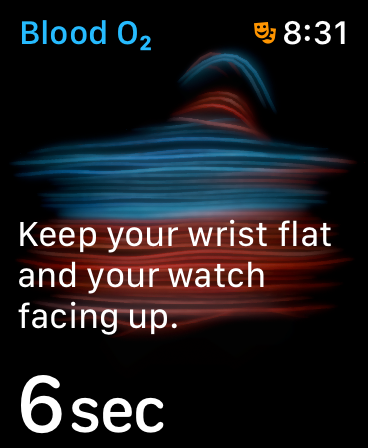
FIGURE 3-17: Keep track of your oxygen level with the Blood O2 app.
Find People
 The little green and blue icon launches the Find People app. The first time you tap this icon, the app asks you permission to access your location on a map while it’s in use and to allow people whom you select to see you. The app then shows your location on a map and you (and they) can see how far away friends are. Tap Allow or Don’t Allow when prompted (first time only).
The little green and blue icon launches the Find People app. The first time you tap this icon, the app asks you permission to access your location on a map while it’s in use and to allow people whom you select to see you. The app then shows your location on a map and you (and they) can see how far away friends are. Tap Allow or Don’t Allow when prompted (first time only).
Podcasts
 In case you haven’t heard, podcasts are free downloadable programs. These can be a comedy routine, news report, political rant, tech advice, religious sermon, or the latest music remix from a popular club DJ. Podcasts can be video, too, but only audio versions work on Apple Watch. When you subscribe to podcast, the show automatically downloads to your device so you can hear it on-demand. The Podcasts app on Apple Watch syncs with your iTunes library so you can hear everything from your wrist (presumably to wireless headphones). See Figure 3-18.
In case you haven’t heard, podcasts are free downloadable programs. These can be a comedy routine, news report, political rant, tech advice, religious sermon, or the latest music remix from a popular club DJ. Podcasts can be video, too, but only audio versions work on Apple Watch. When you subscribe to podcast, the show automatically downloads to your device so you can hear it on-demand. The Podcasts app on Apple Watch syncs with your iTunes library so you can hear everything from your wrist (presumably to wireless headphones). See Figure 3-18.
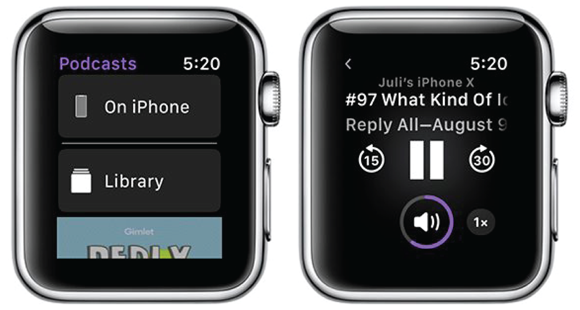
FIGURE 3-18: Sync or stream your favorite podcasts right to your wrists — and then to your Bluetooth headphones!
Radio
 Speaking of audio, Apple Watch’s Radio app lets you stream music to your watch, either via a nearby iPhone over Wi-Fi, or through a cellular connection on some supported models; and you can customize the stations, of course. By default, the app lists some featured stations, but you can choose a desired genre (such as Jazz or Hip-Hop), theme or region (such as Workout, Indie, Kids, or from a specific country), or hear news — all delivered via audio.
Speaking of audio, Apple Watch’s Radio app lets you stream music to your watch, either via a nearby iPhone over Wi-Fi, or through a cellular connection on some supported models; and you can customize the stations, of course. By default, the app lists some featured stations, but you can choose a desired genre (such as Jazz or Hip-Hop), theme or region (such as Workout, Indie, Kids, or from a specific country), or hear news — all delivered via audio.
Audiobooks
 The Audiobooks app, shown in Figure 3-19, lists and plays all books on your iPhone (inside the Apple Books app). Neat, huh? That is, all titles in your Reading Now list are automatically synchronized to your watch. So now you can listen to a chapter while out for a jog and then continue on when you’re back on your iPhone or iPad later, as it remembers where you left off. After you open the Audiobooks app, you have options to how to play acquired audiobooks.
The Audiobooks app, shown in Figure 3-19, lists and plays all books on your iPhone (inside the Apple Books app). Neat, huh? That is, all titles in your Reading Now list are automatically synchronized to your watch. So now you can listen to a chapter while out for a jog and then continue on when you’re back on your iPhone or iPad later, as it remembers where you left off. After you open the Audiobooks app, you have options to how to play acquired audiobooks.
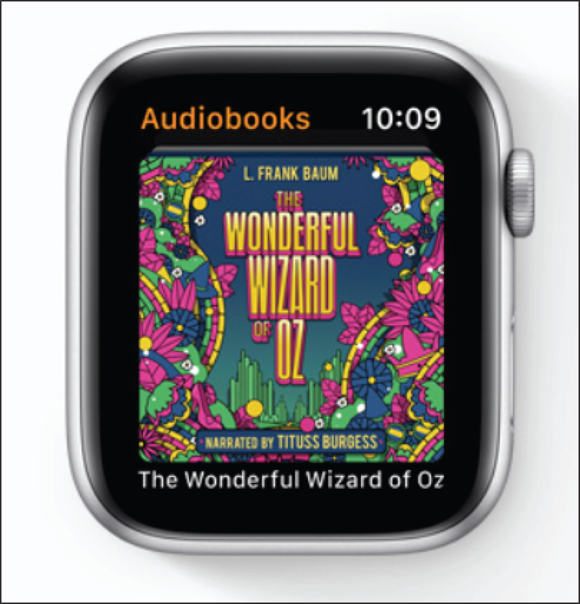
FIGURE 3-19: Play all your audiobooks from your Apple Watch.
App Store
 You no longer need an iPhone to browse and download Apple Watch apps to your wrist! Simply tap the large A icon on your Apple Watch home screen to launch the Apple Watch App Store, shown in Figure 3-20, to start browsing (Trending, Featured apps) or searching (using Scribble or Dictation), along with looking at screenshots, reading reviews, price, and more. It’s about “time” we could access the App Store on Apple Watch directly!
You no longer need an iPhone to browse and download Apple Watch apps to your wrist! Simply tap the large A icon on your Apple Watch home screen to launch the Apple Watch App Store, shown in Figure 3-20, to start browsing (Trending, Featured apps) or searching (using Scribble or Dictation), along with looking at screenshots, reading reviews, price, and more. It’s about “time” we could access the App Store on Apple Watch directly!
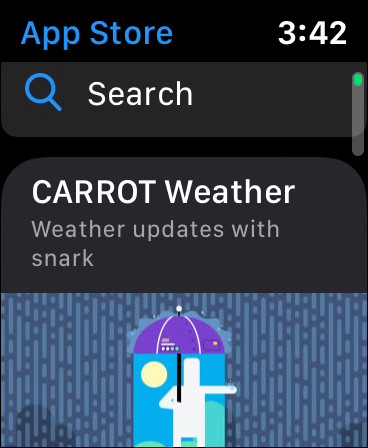
FIGURE 3-20: Browse or search and download new Apple Watch apps directly to your device.
Noise
 High noise could damage your hearing. The new Noise app on Apple Watch has an ear out for you, as it can sense when ambient noise levels reach a dangerous level. Whether it’s at a rock concert or working with heavy machinery, the app might suggest you put in some earbuds; tapping your wrist shows you the estimated decibel level and duration of your exposure. Chapter 8 has more information on the Noise app.
High noise could damage your hearing. The new Noise app on Apple Watch has an ear out for you, as it can sense when ambient noise levels reach a dangerous level. Whether it’s at a rock concert or working with heavy machinery, the app might suggest you put in some earbuds; tapping your wrist shows you the estimated decibel level and duration of your exposure. Chapter 8 has more information on the Noise app.
Cycle Tracking
 Cycle Tracking (which I cover more in Chapter 8) provides insight into a woman’s menstrual cycle, and to help paint a clearer picture of your overall health. Along with data you may want to share with a physician — flow information (Light, Medium, Heavy), symptoms (such as cramps or headaches), and cycle length — you can see a graphical chart on your iPhone’s Health app. The app can even alert you when it predicts that your next period or fertile window is about to start.
Cycle Tracking (which I cover more in Chapter 8) provides insight into a woman’s menstrual cycle, and to help paint a clearer picture of your overall health. Along with data you may want to share with a physician — flow information (Light, Medium, Heavy), symptoms (such as cramps or headaches), and cycle length — you can see a graphical chart on your iPhone’s Health app. The app can even alert you when it predicts that your next period or fertile window is about to start.
Home
 Smart homes all around the world are increasingly powered by Apple HomeKit-enabled products, which means these supported devices all talk to one another securely; these products let you use an app or voice, through Siri, to control it all. For example, you can say “Hey Siri, turn on the lights” or “Lower the thermostat by two degrees.” Apple Watch lets you control your smart home on your wrist too. Tap the orange and white Home button and all your HomeKit items are listed. Just remember that you first need to add the Home app on an iPhone to get things to work.
Smart homes all around the world are increasingly powered by Apple HomeKit-enabled products, which means these supported devices all talk to one another securely; these products let you use an app or voice, through Siri, to control it all. For example, you can say “Hey Siri, turn on the lights” or “Lower the thermostat by two degrees.” Apple Watch lets you control your smart home on your wrist too. Tap the orange and white Home button and all your HomeKit items are listed. Just remember that you first need to add the Home app on an iPhone to get things to work.
Calculator
 Now with a dedicated app on your wrist, access a calculator to quickly calculate a tip, add some receipts or checks you’re depositing into a bank machine, and more. The calculator has the familiar orange, black, and white virtual buttons as the iPhone version. (Don’t forget you can also raise your wrist to activate Siri to ask a math question, as well!)
Now with a dedicated app on your wrist, access a calculator to quickly calculate a tip, add some receipts or checks you’re depositing into a bank machine, and more. The calculator has the familiar orange, black, and white virtual buttons as the iPhone version. (Don’t forget you can also raise your wrist to activate Siri to ask a math question, as well!)
Voice Memos
 Ever come up with a great idea you wanted to capture? Or maybe you need to record a meeting for work or a lecture for school? Whatever your reasons for wanting to record audio, you can now do so on your Apple Watch, thanks to the dedicated Voice Memos app. Simply tap to launch, press the large red Record button, and tap again to stop. All recorded memos will be synced to your iPhone, iPad, and Mac.
Ever come up with a great idea you wanted to capture? Or maybe you need to record a meeting for work or a lecture for school? Whatever your reasons for wanting to record audio, you can now do so on your Apple Watch, thanks to the dedicated Voice Memos app. Simply tap to launch, press the large red Record button, and tap again to stop. All recorded memos will be synced to your iPhone, iPad, and Mac.
Settings
 The Settings app for Apple Watch lets you enable or disable a number of settings, including Airplane mode (turning off all wireless radios), Bluetooth, and Do Not Disturb. This app also mutes your watch in case you don’t want to hear any sounds emit from it. Did you lose your iPhone under the cushions? Your Apple Watch can make your iPhone ping loudly so you can hear it and find it. See Chapter 11 for more on the Settings app on your Apple Watch.
The Settings app for Apple Watch lets you enable or disable a number of settings, including Airplane mode (turning off all wireless radios), Bluetooth, and Do Not Disturb. This app also mutes your watch in case you don’t want to hear any sounds emit from it. Did you lose your iPhone under the cushions? Your Apple Watch can make your iPhone ping loudly so you can hear it and find it. See Chapter 11 for more on the Settings app on your Apple Watch.
Compass
The built-in “magnetometer” inside the watch detects magnetic north, and then automatically adjusts to show true north, so you now know which way you’re facing in the Maps app (this can be quite handy). The standalone Compass app also shows additional information — heading, incline, latitude, longitude, and current elevation — or you can have compass information as a watch face complication (see Chapter 4). Be aware, Apple says bands with magnetic clasps (opposed to leather or silicone bands) may cause some interference with the built-in compass, which could limit its accuracy.
Shortcut
As the name suggests, a shortcut is a quick way to run actions, such as “It’s TV time,” where your lights dim, and television and sound bar turn on. Or you can create a shortcut called “Heading to Work,” to get your estimated time of arrival (ETA), hear about your first calendar event, and start an Apple Music playlist.
Apple News
 It’s news you can use. The large “N” icon, in red and white, brings you curated headlines and stories from several publications (see Figure 3-21) that you can tweak. Read on your watch, look at photos, and tap Save For Later or Next Story. You can start on your Apple Watch and continue on your iPhone or iPad, or vice versa.
It’s news you can use. The large “N” icon, in red and white, brings you curated headlines and stories from several publications (see Figure 3-21) that you can tweak. Read on your watch, look at photos, and tap Save For Later or Next Story. You can start on your Apple Watch and continue on your iPhone or iPad, or vice versa.

FIGURE 3-21: Read the news wherever you are.

 Although some of the Apple Watch models are best used while wirelessly tethered to a nearby iPhone, the Series 6 watch does have 32 gigabytes (GB) of storage you can use (fun fact: it was 8GB for the first couple of models and then 16GB until Series 6). Well, not all of it, mind you, because Apple uses the integrated storage for various things, including watchOS (operating system) and parts of installed apps. But you can store quite a bit of offline music and podcasts; therefore, you can leave your phone at home if you go for a jog (although Bluetooth headphones, such as Apple’s trendy AirPods, are recommended). See
Although some of the Apple Watch models are best used while wirelessly tethered to a nearby iPhone, the Series 6 watch does have 32 gigabytes (GB) of storage you can use (fun fact: it was 8GB for the first couple of models and then 16GB until Series 6). Well, not all of it, mind you, because Apple uses the integrated storage for various things, including watchOS (operating system) and parts of installed apps. But you can store quite a bit of offline music and podcasts; therefore, you can leave your phone at home if you go for a jog (although Bluetooth headphones, such as Apple’s trendy AirPods, are recommended). See  You can wear Apple Watch on the right wrist and turn around the watch case, which puts the side button (and Digital Crown) on the left side of the watch. See
You can wear Apple Watch on the right wrist and turn around the watch case, which puts the side button (and Digital Crown) on the left side of the watch. See